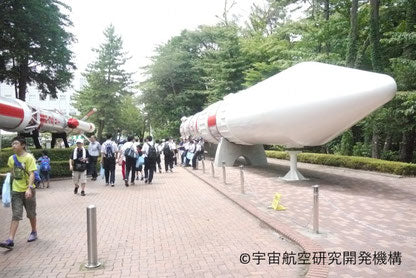Musou Black Goes To Space Pt 3

This is the third installment in a series highlighting how The Black Market products contribute to Japan’s space development efforts!
Previous articles introduced the "IR Flock Sheet," utilized in JAXA’s (Japan Aerospace Exploration Agency) darkroom for star tracker testing, and the "Fineshut KIWAMI," integrated into the visible-light camera of the Milky Way Galaxy Research Center’s astronomical observation telescope. These examples demonstrate the role of these products in supporting advanced space research.
A Visit to JAXA’s Sagamihara Campus
JAXA’s Sagamihara Campus serves as a key research facility dedicated to studying a range of cosmic phenomena, including solar activity, the Moon and planets, black holes, and the formation of galaxies.
Situated in a quiet, green environment about a 20-minute walk from Fuchinobe Station, the campus provides a setting that reflects its role in pioneering space research. Upon entry, visitors encounter a 30-meter-long rocket, reinforcing the facility’s status at the forefront of Japan’s space exploration efforts.
Further insights into the contributions of these technologies to astronomical advancements will be explored in upcoming reports.
Photograph from the Special Public Viewing at Sagamihara Campus (2015)
An interview was conducted with Researcher Miyagawa, who recently purchased Fineshut KIWAMI.
The rooftop observatory at JAXA’s Sagamihara Campus was originally built in 1988 as a prototype for Japan’s Subaru Telescope, a large optical-infrared telescope located in Hawaii. At the time, Japan had no prior experience in manufacturing large equatorial-mounted astronomical telescopes. This observatory was constructed to establish a track record before the development of the Subaru Telescope, making it a historically significant instrument.
When the observatory was first built, the surrounding area was dark, allowing for unobstructed astronomical observations. However, over time, urban development led to increased artificial lighting, which became a growing concern due to stray light interference with the telescope.
To address this issue, Researcher Miyagawa focused on Fineshut KIWAMI, a high-performance anti-stray light sheet developed by The Black Market.
Already familiar with the company through television and other media, Researcher Miyagawa turned to the company’s website upon discovering that urban lights were introducing noise into the rooftop observatory’s telescope. After reviewing available materials, Fineshut KIWAMI was chosen as the most suitable solution.
Introduction to Fineshut KIWAMI: Anti-Reflection Material
The Fineshut series was developed as an internal anti-reflection material for optical devices. It consists of an ultra-fine foamed polyurethane sheet that balances exceptional optical properties with a thin profile. Fineshut KIWAMI retains these core material properties while incorporating a complex surface texture to further enhance light absorption capabilities.
One of the standout features of this product is its high light absorption in the infrared spectrum. Traditional anti-stray light materials, such as flocked (fiber-coated) surfaces, achieve their black color through dyes. However, while these dyes appear black to the human eye, they lose absorption efficiency at longer wavelengths above 700nm, making them ineffective for near-infrared stray light suppression.
In contrast, the Fineshut Series achieves its black coloration by blending carbon directly into the raw material, ensuring consistent light absorption across both visible and infrared wavelengths. This makes it an ideal anti-stray light solution for industrial cameras sensitive to near-infrared light.
Effectiveness of Fineshut KIWAMI
Fineshut KIWAMI has been implemented inside the visible-light camera of the astronomical observation telescope, as well as on the telescope’s structure, to minimize stray light interference. Data analysis has confirmed a significant reduction in light noise, demonstrating the material’s effectiveness.
Currently, the observatory’s telescope is equipped with a visible-light camera. However, there are plans to install an infrared detector developed for the JASMINE Project in the coming year. This detector will be used for ground-based data collection before being launched aboard a satellite.
The JASMINE Project aims to deploy an infrared observation satellite to conduct high-precision observations of the central region of the Milky Way Galaxy. This initiative has attracted significant attention, and it is remarkable that materials developed by The Black Market are contributing to such an ambitious project.
Visiting the Astronomical Observation Telescope
After the interview, an on-site visit was conducted to observe the telescope where Fineshut KIWAMI is in use.
Taking the elevator to the rooftop of JAXA’s Sagamihara Campus, the rain that had been falling earlier had stopped, revealing a clear sky.
On the rooftop, a circular observatory houses a 1.3-meter telescope, which is actively used for astronomical observations. The following image showcases the telescope in its current setup.
It was the first time seeing an astronomical observation telescope at a public facility, and its size was truly astonishing. Considering that this is just the prototype for the Subaru Telescope, the actual Subaru Telescope in Hawaii must be an incredibly massive structure.
Here is an image captured by the telescope’s visible-light camera.

Fineshut KIWAMI has been applied to the interior of the telescope to prevent stray light. Additionally, it has been used to reduce stray light in the optical path of the visible-light camera, specifically in the area marked by the red dashed circle.

Additionally, Fineshut KIWAMI was applied to the back of the secondary mirror, mounted on cardboard. Since Fineshut KIWAMI is easy to cut and can be applied to various surfaces, it allowed for a trial-and-error approach, which proved to be highly beneficial. Given the effectiveness of this solution, there are plans to eventually upgrade the part by replacing the cardboard with a metal or plastic component for a finalized version.
Conclusion
The IR Flock Sheet, previously identified as a key material in the development of special darkrooms for star tracker testing, has been playing a role in Japan’s space research. Similarly, Fineshut KIWAMI and Musou Black Paint have been used to prevent stray light inside astronomical observation telescope cameras. This time, the application of Fineshut KIWAMI in the JASMINE Project telescope was observed firsthand.
It is a great honor to see these materials contributing to Japan’s space development once again. Moving forward, continued advancements in ultra-black materials will further support the industry’s growth.
Thank you for your support, and stay tuned for future developments!
공유하다:
